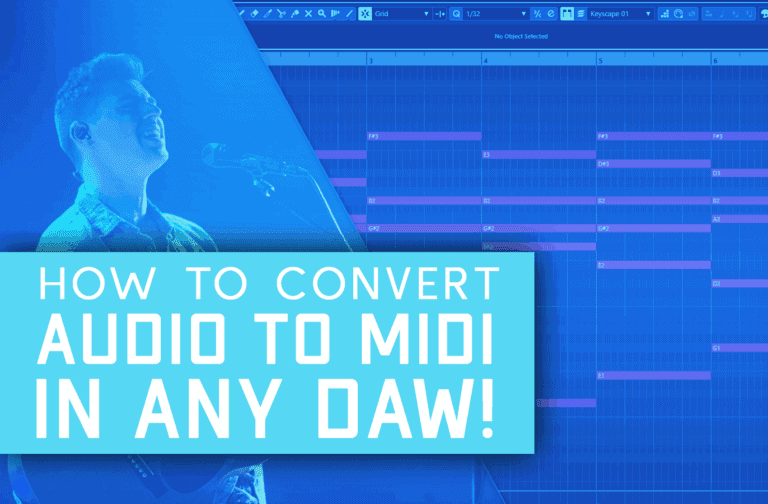The term “song structure” can be extremely broad in its definition. There are a few chord sequences we hear in just about every song on the radio and in tons of great songs that have been written over the years. We constantly go back to these sequences because they are familiar, and they really do sound great.
On the other hand, doing the same thing over and over and doing the same thing as everyone else can get stale! While it isn’t a bad thing to use time-tested song structure in your music, especially as a starting point, don’t be afraid to break out of that and do something unique!

How do we define song structure?
Structure simply organizes music. This organization can be very predictable and easily digested, like in pop music, or it can be more complex and hard to follow, as with classical or contemporary progressive music.
The structure is just the arrangement of the different parts of a song — the verse, the chorus, the bridge, etc. Some of these sections repeat, and some of them do not.
All things considered, how a song is structured plays a massive part in whether the listener is engaged or not. Wild ‘progressive’ songs with no repeated sections don’t do as well as straight-ahead pop.
Historically, people like repetition, especially if there’s a catchy melody and hook. These are typically the guidelines to follow if you want to write a catchy chorus.
The most common song structure is ‘pop’ organization
The longstanding unwritten rule is that a pop song for radio should be 3 minutes and 20 seconds long, or shorter. Within this 3:20 format, generally, you want to get to the first chorus within 45 seconds.
The standard pop structure looks like this: verse, chorus, verse, second chorus, bridge, double chorus, and out. It’s time-tested, it works, and it’s spawned hundreds and hundreds of hits.
Obviously, this doesn’t mean you have to stick to these guidelines all the time. But if accessibility to the average listener is important to you, writing within a known structure is a good exercise.
If you don’t normally try to write ‘pop’ songs, you can even challenge yourself to write within these guidelines. Adding that challenge may help you to create an even better song than you intended.
Of course, there really is no right or wrong way to make music. Just keep in mind the requirements of the different platforms your song will be played, what your listeners will respond to, and then challenge yourself to write something amazing within those constructs.
Apart from just where sections of the song are placed, a good song structure follows a few simple steps.
- Repetition: This is what ‘hooks’ listeners and keeps them coming back. This is what listeners anticipate — coming out of a new section of the song back into something familiar.
- Transitions: It’s easy to overlook transitions when we’re focused on the macro parts of the song — the verse, the hook, etc. But good song structure includes great transitions between the moving parts. There’s a fine balance between rushing the song with no transition parts and lingering on transitions a bit too long. Help the song build with appropriate transitions between sections.
- Tension & Release: Another hallmark of great structure (and production) is tension and release. Building up the tension during a verse to release it in a massive hook. As in film or literature, you want to tell a story with your song that has ups and downs, highs and lows. This is all part of how you structure and produce it.
Ultimately, song structure and production together make a song great. Try a few of these simple tips to augment your song structure through fantastic production.
Overlap/ Double-up Vocals In The Chorus
This is a super simple trick, which many of you are probably already using. The idea behind doubling-up vocals during the chorus is basically to add energy and movement to the chorus. This allows you to make it stand out from the rest of the verses. It adds more depth where you need it.
One easy way to do this would be to “tuck” the duplicate track underneath the original track, volume-wise. However, mixing background vocals on the duplicate track slightly different than the original can add a lot of color to the overall track. It’s never a bad idea to play with different EQ settings that allow you to gently ease off some of the lows and highs to create space for it underneath the main vocal track.
There’s no reason you can’t play with other elements such as saturation and slight modulation here as well.
One drawback to this method is that it’s not as effective when working with live-sounding acoustic vocal tracks. For Pop, Hip-Hop, EDM, or even occasionally metal music, a little duplicate-layering can go a long way in keeping the vocals focused in the center of the mix.
Add (Even More) Layers!
As we mentioned above, duplicating and layering up on certain tracks can add a greater sense of excitement and drama to your music. This is not only true for vocals. It works just as well with guitar, drums, keys, or any other instrumentation you may need to “beef up” a bit.

Good riffs and melodies (on their own) are always necessary, but even the best can sometimes feel empty. If you find that to be the case with your mix, it’s time to look for other ways to fill the sonic gaps.
Everything ties back into the idea of structure, tension, & release. You can begin with a relatively sparse sound that you build up as you move along by adding more layers.
Octaves
Using octaves (up or down) of your main riff is one of the easiest ways to add a little variety to your rhythm. You can follow all along with the chord changes with octaves, or perhaps just drop them subtly for texture here and there.
Harmonies
Depending on whether you have space for it in the mix, harmonies are a great way to add some bulk to thin sections. Some bands rely heavily on harmonies to build their signature sound. Iron Maiden is a great example, for their unmistakable melodic guitar harmonies.
You probably won’t want to build entire songs around harmonies, but cleverly working them into a verse or chorus can take your song to another level.
Forgetting Everything You Think You Know About Song Structure (Kind Of)
If you haven’t realized it yet, songwriting and structure are part of the overall production puzzle. So it’s safe to say that modern songwriters act on some level as producers as well!
As we talked about earlier, when we’re following the pop formula, songs can sound “hooky” when we hear them because of the repetition. However — with so many tracks sharing the identical chord sequences — 6-4-1-5, for instance (in C Major, that would be A minor, F, C, and G) — we sometimes stick to what works versus what sounds fresh.
Great sound design will always be necessary for unique production, but excellent song structure can open up the possibilities! Just because the pop formula is easy and effective doesn’t mean you should be afraid to shake things up a bit!
Anything you can think of to go against the grain while thoughtfully adding to your sound is something that will add uniqueness to your songwriting and production!







